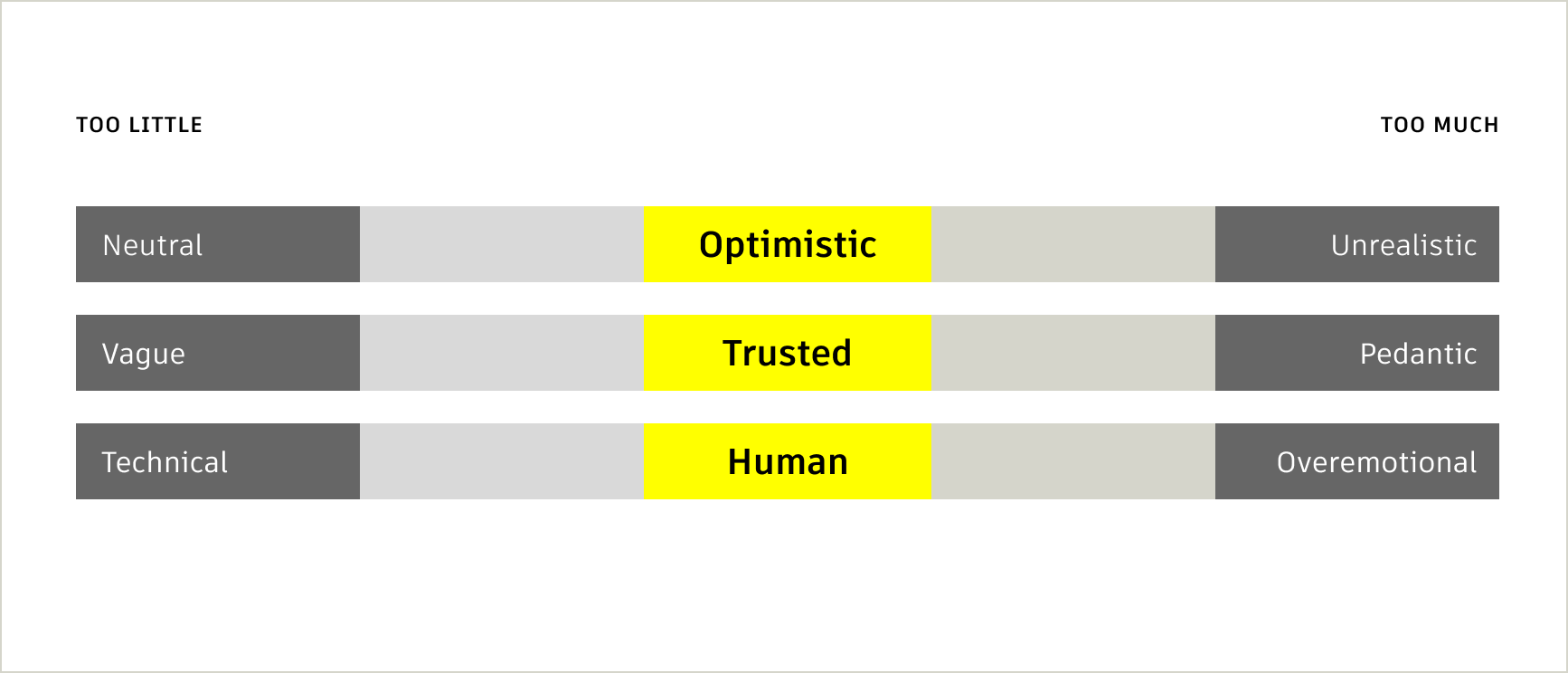Our voice brings to life the stories we tell. It builds and deepens our relationships with our audiences and customers. It’s authentic, real, and accessible, derived from our brand values and reflective of who we are.
What’s the difference between voice and tone?
- Voice is Autodesk’s brand personality expressed in language. It stays consistent across all touchpoints.
- Tone is the modulation of our voice based on audience, context, and type of content. A social media post and a support article will have very different tones.
The Autodesk brand voice is optimistic, trusted, and, above all, human.
Optimistic Copy link to clipboard
We delight in putting problems into perspective. We are forward-looking and embrace progress, learning, and possibility. We inspire our audiences to innovate with confidence.
How this shows up: Show people what’s possible and help them discover solutions to their challenges. Position problems as opportunities in another form. Call out and celebrate ingenuity and out-of-the-box thinking.
- Focus on progress and outcomes, not difficulty.
- Help people learn by doing. Show them actions they can take or ways to improve their work.
- Be positive, but don’t overpromise or upsell.
Trusted Copy link to clipboard
Our voice helps us earn credibility and build trust. We don’t hide behind vague or fluffy language or make claims we can’t back up. We communicate with clarity, honesty, and encouragement.
How this shows up: Be the expert. Help people learn key concepts using language they understand, but don’t talk down to them. Have a point of view on your subject—don’t be ambivalent.
- Establish our expertise and demonstrate that we know what we’re talking about.
- Help people learn the things we know, without lecturing them.
- Be transparent about where our information comes from.
Human Copy link to clipboard
We work in tech, but we’re not robots—and neither are our audiences. That’s why we use clear, relatable language, not jargon and cliches. If there’s a simple, straightforward way to say something, that’s how we’ll say it.
How this shows up: We are empathetic to what our audiences are experiencing. We are warm and welcoming. We show them that we understand their problems and their challenges. And we talk to them, not about them.
- Help people understand what they can do, what they can’t, and why.
- Empathize with and understand their challenges, needs, and points of view.
- Share our philosophy, embody an open-minded approach, and embrace a dialogue.
Our voice continuum Copy link to clipboard
Consider this continuum to guide your content decisions and find the sweet spot in the center.
